Related Research Articles

Pope Pius V, born Antonio Ghislieri, was head of the Catholic Church and ruler of the Papal States from 8 January 1566 to his death in 1572. He is venerated as a saint of the Catholic Church. He is chiefly notable for his role in the Council of Trent, the Counter-Reformation, and the standardization of the Roman Rite within the Latin Church. Pius V declared Thomas Aquinas a Doctor of the Church.

Pope Gregory XIII, born Ugo Boncompagni, was head of the Catholic Church and ruler of the Papal States from 13 May 1572 to his death in 1585. He is best known for commissioning and being the namesake for the Gregorian calendar, which remains the internationally accepted civil calendar to this day.
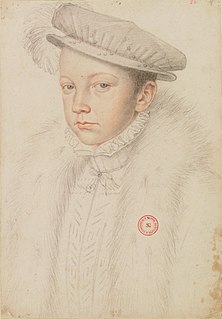
Francis II was King of France from 1559 to 1560. He was also King consort of Scotland as a result of his marriage to Mary, Queen of Scots, from 1558 until his death in 1560.

Charles IX was King of France from 1560 until his death in 1574 from tuberculosis. He ascended the throne of France upon the death of his brother Francis II in 1560.

The French Wars of Religion were a prolonged period of war and popular unrest between Catholics and Huguenots in the Kingdom of France between 1562 and 1598. It is estimated that three million people perished in this period from violence, famine, or disease in what is considered the second deadliest religious war in European history.

The St. Bartholomew's Day massacre in 1572 was a targeted group of assassinations and a wave of Catholic mob violence, directed against the Huguenots during the French Wars of Religion. Traditionally believed to have been instigated by Queen Catherine de' Medici, the mother of King Charles IX, the massacre took place a few days after the wedding day of the king's sister Margaret to the Protestant Henry of Navarre. Many of the most wealthy and prominent Huguenots had gathered in largely Catholic Paris to attend the wedding.
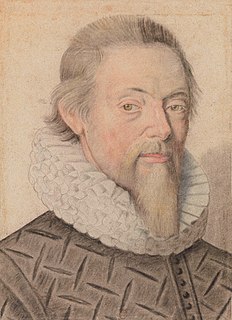
Philippe de Mornay, seigneur du Plessis Marly, usually known as Du-Plessis-Mornay or Mornay Du Plessis, was a French Protestant writer and member of the anti-monarchist Monarchomaques.

The Amboise conspiracy, also called Tumult of Amboise, was a failed attempt by Huguenots in 1560 to gain power over France by abducting the young king Francis II and arresting Francis, Duke of Guise and his brother, the Cardinal of Lorraine. It was one of the events directly leading up to the Wars of Religion that divided France from 1562 to 1598.
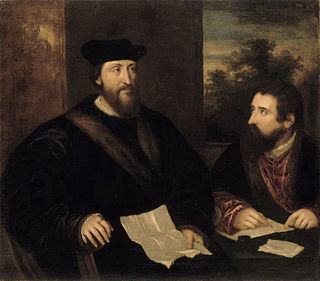
Georges d'Armagnac was a French humanist, patron of arts, Cardinal and diplomat deeply embroiled in the Italian Wars and in the French Wars of Religion.
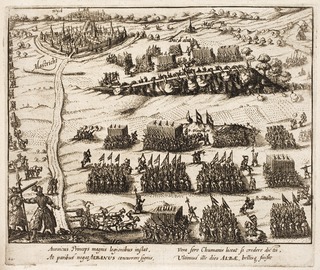
The Battle of Jodoigne was fought on 20 October 1568 between Spanish and Dutch Rebel forces.

The Roman Catholic Diocese of Langres is a Roman Catholic diocese comprising the département of Haute-Marne in France.
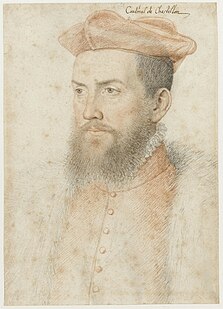
Odet de Coligny was a French aristocrat, cardinal, Bishop-elect of Beauvais, Peer of France, and member of the French Royal Council. From 1534 he was usually referred to as the Cardinal of Châtillon.

The former Catholic diocese of Maillezais in north-west France was erected in 1317, by Pope John XXII, and ceased to exist in 1648 when it was incorporated into the new diocese of La Rochelle. The town of Maillezais is now found in the department of Vendée, and most of the territory of the former diocese belongs to the diocese of Luçon.

The Roman Catholic Archdiocese of Chambéry, Saint-Jean-de-Maurienne, and Tarentaise is an archdiocese of the Latin Rite of the Roman Catholic Church in France and a suffragan of the Archdiocese of Lyon. The archepiscopal see is Chambéry Cathedral, located in the city of Chambéry. The archdiocese encompasses the department of Savoie, in the Region of Rhône-Alpes. The current archbishop is Mgr. Philippe Ballot, formerly a priest in Besançon.

The Roman Catholic Diocese of Montauban is a diocese of the Latin Rite of the Roman Catholic Church in France. The diocese is coextensive with Tarn-et-Garonne, and is currently a suffragan of the Archdiocese of Toulouse. The episcopal seat of the Diocese of Montauban is in Montauban Cathedral.
Philippe de La Chambre was a French Benedictine monk and Abbot, and Cardinal.

Frederik Schenck van Toutenburg was the first Archbishop of Utrecht (1559-1580). Prior to Schenck's ministry as archbishop, Utrecht was a bishopric with a succession of sixty bishops. The last bishop of Utrecht, prior to Schenck was George van Egmond. After Schenck's death in 1580, the see would remain vacant until Sasbold Vosmeer assumed the archbishopric in 1602.
Charlotte Duplessis-Mornay was a French writer of the Reformation, known for her first-person account of the St. Bartholomew's Day massacre (1572) and for authoring the Memoires de Messire Philippes de Mornay, about her husband, Philippe de Mornay.

Gerard van Groesbeeck (1517–1580) was a prelate who became the 88th Bishop of Liège, as well as Prince-Abbot of Stavelot and a cardinal of the Catholic Church.

The siege of Mons of 1572 took place at Mons, capital of the County of Hainaut, Spanish Netherlands, between 23 June and 19 September 1572, as part of the Eighty Years' War, the Anglo-Spanish War (1585–1604), and the French Wars of Religion. In the spring of 1572, after the capture of Valenciennes by a Protestant force under Louis of Nassau, the Dutch commander continued with his offensive and took Mons by surprise on 24 May. After three months of siege, and the defeats of the armies of Jean de Hangest, seigneur d'Yvoy and Genlis, and William the Silent, Prince of Orange (Dutch: Willem van Oranje), by the Spanish army led by Don Fernando Álvarez de Toledo, Duke of Alba, Governor-General of the Spanish Netherlands, and his son, Don Fadrique de Toledo, Louis of Nassau's forces, isolated and without any hope of help, surrendered Mons to the Duke of Alba on 19 September.